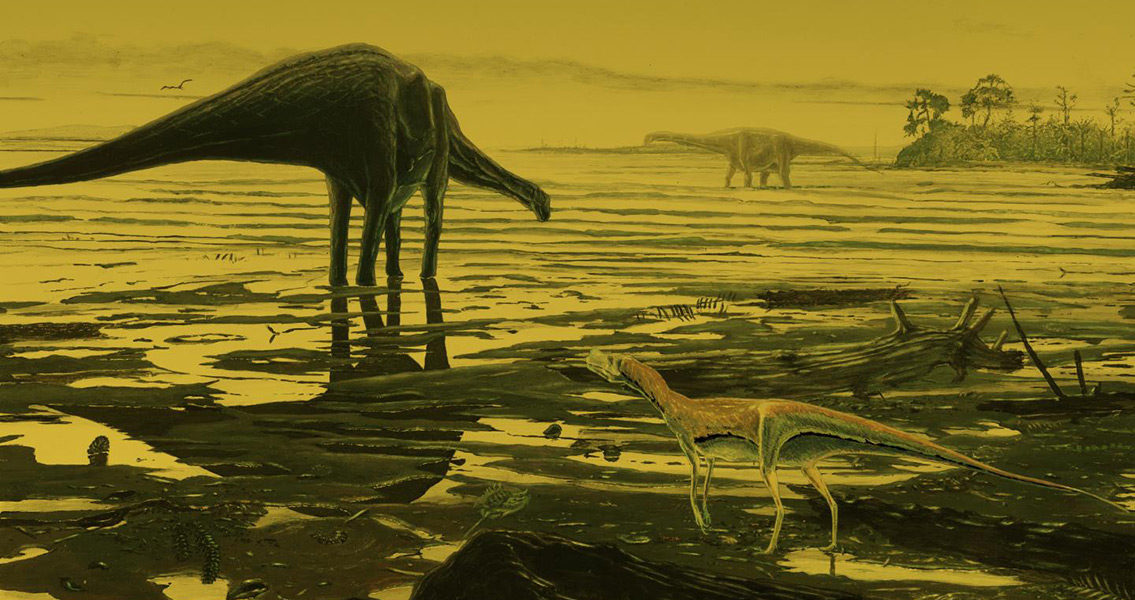<![CDATA[It started out as a simple scouting expedition on the Isle of Skye after a geologist had reported finding bones along the coast line. It ended with the discovery of the largest dinosaur find in Scotland. Hundreds of tracks found along Scotland’s coast show that plant-eating sauropods, which include the largest known dinosaurs, once walked there. According to University of Edinburgh paleontologist Stephen Brusatte, he and fossil expert Tom Challands had spent a whole day finding nothing more than shark's teeth and other small fossils when they happened across something which appeared to be a pothole. In fact, it was the footprint of a dinosaur, which led to a string of footprints covering a 49 foot (15 meters) by 82 foot (25 meters) area. These are the first sauropod tracks found in Scotland, with the largest footprint measuring 70 cm in diameter. The only evidence until now that these dinosaurs lived in Scotland was from a small number of teeth and bone fragments. The size of the area of tracks isn't the only remarkable aspect of the find however. The footprints on the Isle of Skye date to the Middle Jurassic period, more than 161 million years ago. This, Brusatte says, “is one of the most poorly understood time intervals in dinosaur evolution.” The tracks offer a new glimpse into which dinosaurs lived in the area and how they behaved during this mysterious time. It's impossible to match a footprint to a skeletal foot, so there's no way to identify exactly what dinosaur left the tracks, but the footprints do preserve adequate details for experts to identify them as coming from sauropod dinosaurs, like the Brontosaurus, who walked with legs that were close to each other along their middle. The environment the dinosaurs were walking around in was also a surprise. Paleontologists are still uncertain why sauropods on the ancient island and other sites as well would skirt the boundaries of seas, wetlands and lagoons. Protection from predators or a possible food source are two likely explanations. Others argue that finding the sauropod footprints along coastal habitats shouldn't be surprising considering these places acted as paths of least resistance for dinosaurs moving from one point to the next, because they were easy to navigate and sparsely covered. So although sauropods were landlubbers for the most part, it seems some of them at least were comfortable getting their feet wet. The new track site in Skye is positively one of the most remarkable discoveries ever made in Scotland according to Dr. Brusatte. There are so many footprints crisscrossing each other it appears to be a dinosaur disco frozen in stone. If you follow the tracks you can walk with the dinosaurs as they waded through a lagoon approximately 170 million years ago, when Scotland had a much warmer climate than today. The find establishes the Isle of Skye as an important area for continued research into the Mid-Jurassic time period. Image courtesy of Jon Hoad]]>
New Footprints of Old Dinosaurs
